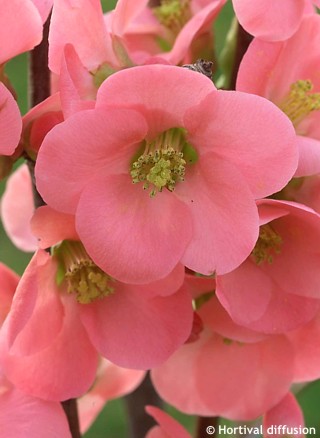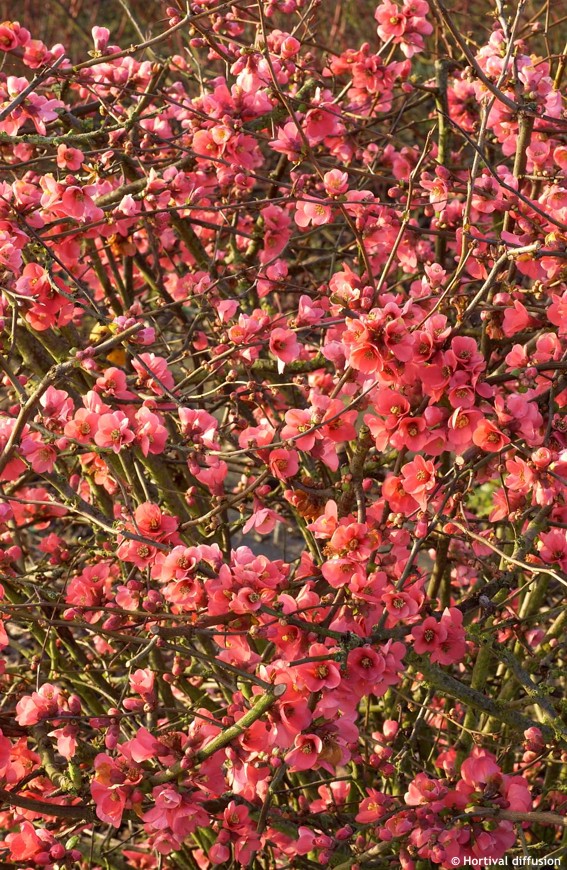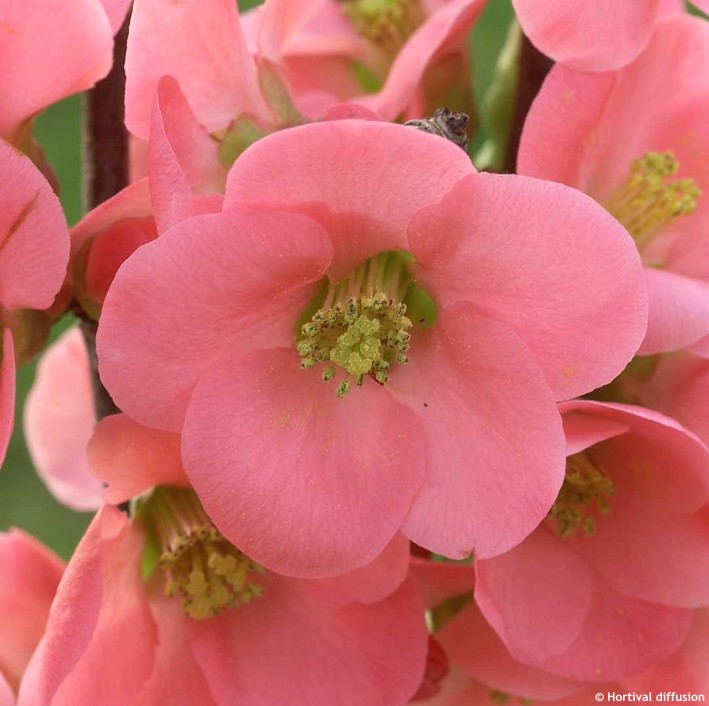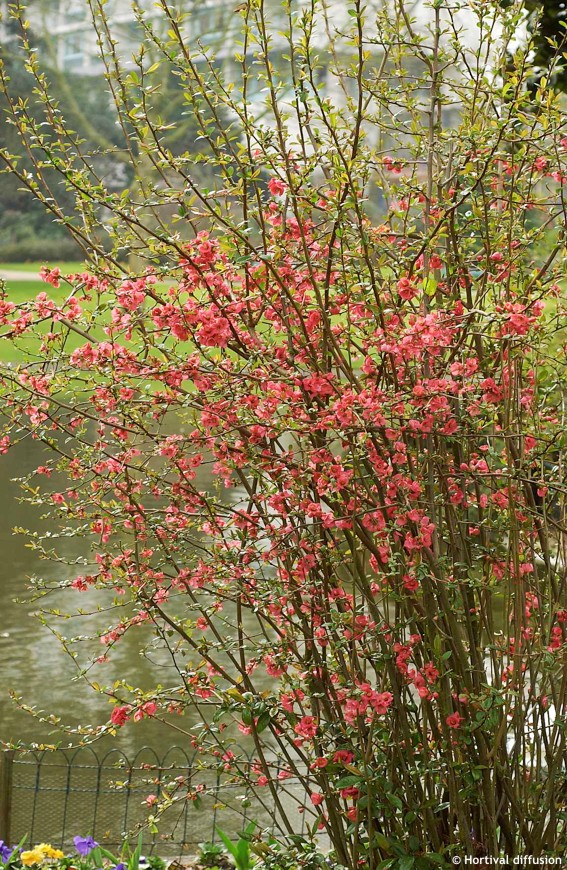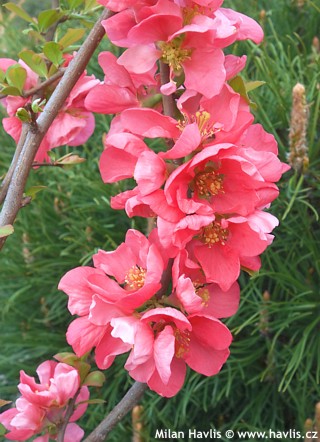Chaenomeles speciosa 'EXIMIA' Japanese quince


Chaenomeles
Flowering quince is one of the most popular shrubs for bonsai makers. It is valued for its profuse flowering and irregular growth ideal for never-ending clipping and shaping. In Japan it is cultivated in similar quantity to flowering cherries and magnolias. It is a deciduous shrub with glossy, dark green leaves, and branches with 2-3 cm thorns.
Eximia is an old quince variety from Switzerland, bred by Otto Froebel in 1886. It makes medium sized, almost campanulate flowers of salmon pink colour. They commonly open in the first decade of April, however, if the winter is warm you can see numerous buds opening already in mid to late March. The shrub flowers for 6-8 weeks, and what is most interesting – it keeps small growing only about a meter tall and wide. Flowers are followed by edible, pear-shaped pomes, 4-5 cm in diameter. It grows medium fast into an upright, quite compact, and dense shrub about 2m.
Japanese quince will grow in almost any soil apart from too alkaline. For best results grow it in moderately fertile and reasonably drained garden soil, it can take clay and occasional drought when established but evenly moist soil will secure richer growth and better appearance. Pruning is crucial unless you like its natural unkempt habit. Prune the branches hard immediately after by 30-80% and remove leggy twigs from inside the shrub to achieve an airier habit with visible framework. Hardy to about -29°C (USDA zone 5) and suitable for outdoor pots.
Last update 14-05-2019

































